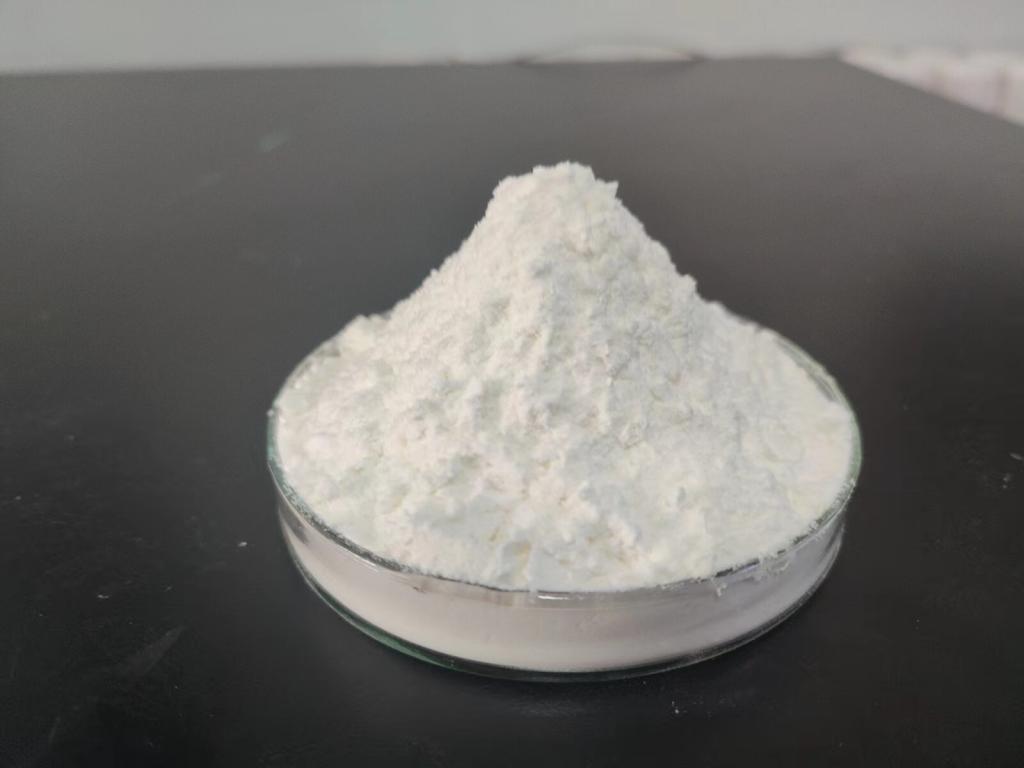Tel:0086 18231198596

News
Current Position:
Home >
News
>ε-Polylysine hydrochloride is effective in inhibiting bacterial spoilage.
ε-Polylysine hydrochloride is effective in inhibiting bacterial spoilage.
TIME:2024-04-11
Understanding ε-Polylysine Hydrochloride
ε-Polylysine hydrochloride, a natural antimicrobial compound derived from microbial fermentation, possesses remarkable inhibitory effects against a broad spectrum of bacteria, including spoilage organisms and foodborne pathogens. Its chemical structure comprises multiple lysine residues linked by peptide bonds, imparting cationic properties that facilitate interaction with microbial cell membranes.
Mechanisms of Action
The antimicrobial activity of ε-polylysine hydrochloride is multifaceted, targeting various aspects of microbial physiology. Upon contact with bacterial cells, ε-polylysine hydrochloride disrupts the integrity of the cell membrane, leading to increased permeability and leakage of intracellular components. This disruption compromises essential cellular functions, ultimately resulting in cell death.
Furthermore, ε-polylysine hydrochloride can penetrate the cytoplasmic membrane of bacterial cells, interfering with metabolic processes and inhibiting protein synthesis. This dual mechanism of action ensures effective inhibition of bacterial growth while minimizing the risk of resistance development.
Applications in Food Preservation
One of the key advantages of ε-polylysine hydrochloride is its compatibility with a wide range of food products and processing techniques. In the meat and poultry industry, ε-polylysine hydrochloride is used to inhibit the growth of bacteria such as Salmonella, Escherichia coli, and Listeria monocytogenes, thereby enhancing product safety and shelf life.
Similarly, in the dairy industry, ε-polylysine hydrochloride helps control the growth of spoilage organisms and pathogens in milk, cheese, and yogurt, without compromising taste or texture. Its ability to inhibit microbial growth in acidic environments makes it particularly effective in fermented dairy products.
Moreover, ε-polylysine hydrochloride finds applications in the preservation of processed foods, such as sauces, dressings, and ready-to-eat meals. Its compatibility with high-temperature processing and a wide pH range makes it suitable for use in a variety of food matrices, ensuring effective microbial control without altering product characteristics.
Sensory Impact
One of the key challenges in food preservation is maintaining sensory quality while ensuring microbial safety. ε-Polylysine hydrochloride offers a solution to this challenge by exerting antimicrobial effects without imparting undesirable sensory attributes to food products.
Studies have shown that ε-polylysine hydrochloride has minimal impact on the taste, aroma, appearance, and texture of food products. Sensory evaluation tests conducted on various food items treated with ε-polylysine hydrochloride have consistently demonstrated consumer acceptance and preference for treated samples.
Furthermore, ε-polylysine hydrochloride does not alter the nutritional content of food products, allowing consumers to enjoy nutritious and wholesome foods without compromise. Its compatibility with a wide range of food matrices ensures that it can be seamlessly integrated into diverse product formulations, catering to the preferences and dietary needs of consumers.
Regulatory Considerations
The regulatory status of ε-polylysine hydrochloride varies depending on the country and intended use. In many jurisdictions, it is recognized as a safe food additive, with established maximum residue limits (MRLs) and usage levels. Regulatory bodies such as the Food and Drug Administration (FDA) in the United States and the European Food Safety Authority (EFSA) in the European Union have evaluated the safety of ε-polylysine hydrochloride and established guidelines for its use in food products.
It is essential for food manufacturers to adhere to regulatory requirements and ensure compliance with applicable standards and labeling regulations. This includes accurate labeling of ε-polylysine hydrochloride in ingredient lists and adherence to permitted usage levels to ensure consumer safety.
Implications for the Food Industry
The incorporation of ε-polylysine hydrochloride into food preservation strategies offers significant benefits for the food industry. By effectively inhibiting bacterial spoilage without compromising sensory quality or nutritional content, ε-polylysine hydrochloride enables manufacturers to meet consumer demand for safe, high-quality food products.
Moreover, ε-polylysine hydrochloride contributes to the reduction of food waste by extending the shelf life of perishable items. By minimizing spoilage and microbial contamination, it helps reduce the volume of food discarded at various stages of production, distribution, and consumption, thereby promoting sustainability and resource conservation.
Future Directions
As consumer demand for safe and minimally processed foods continues to grow, the demand for ε-polylysine hydrochloride is expected to increase. Future research and development efforts may focus on optimizing the formulation and application of ε-polylysine hydrochloride to further enhance its efficacy and compatibility with different food matrices.
Furthermore, advancements in processing technologies and packaging materials may facilitate the integration of ε-polylysine hydrochloride into a wider range of food products, expanding its utility and impact on food safety and quality.
Conclusion
ε-Polylysine hydrochloride represents a valuable tool in food preservation, offering effective inhibition of bacterial spoilage without compromising taste, appearance, or nutritional content. Its broad-spectrum antimicrobial activity, compatibility with diverse food matrices, and minimal sensory impact make it an indispensable asset for the food industry.
By incorporating ε-polylysine hydrochloride into food preservation strategies, manufacturers can ensure the safety and quality of their products while meeting consumer expectations for wholesome and nutritious foods. As the food industry continues to prioritize safety and sustainability, ε-polylysine hydrochloride will remain a cornerstone of microbial control strategies, contributing to the advancement of food safety and public health worldwide.

 CONTACT
CONTACT




